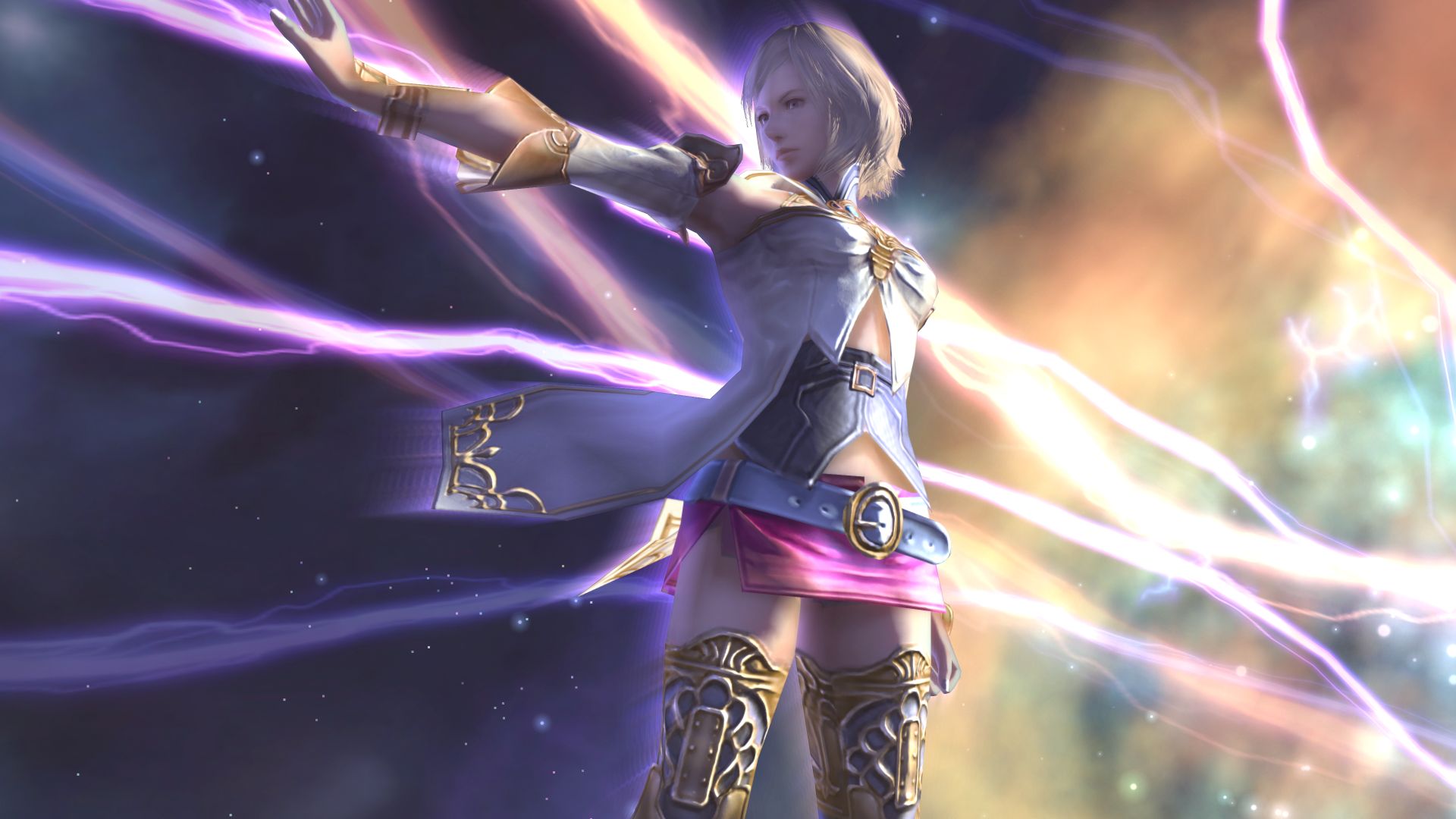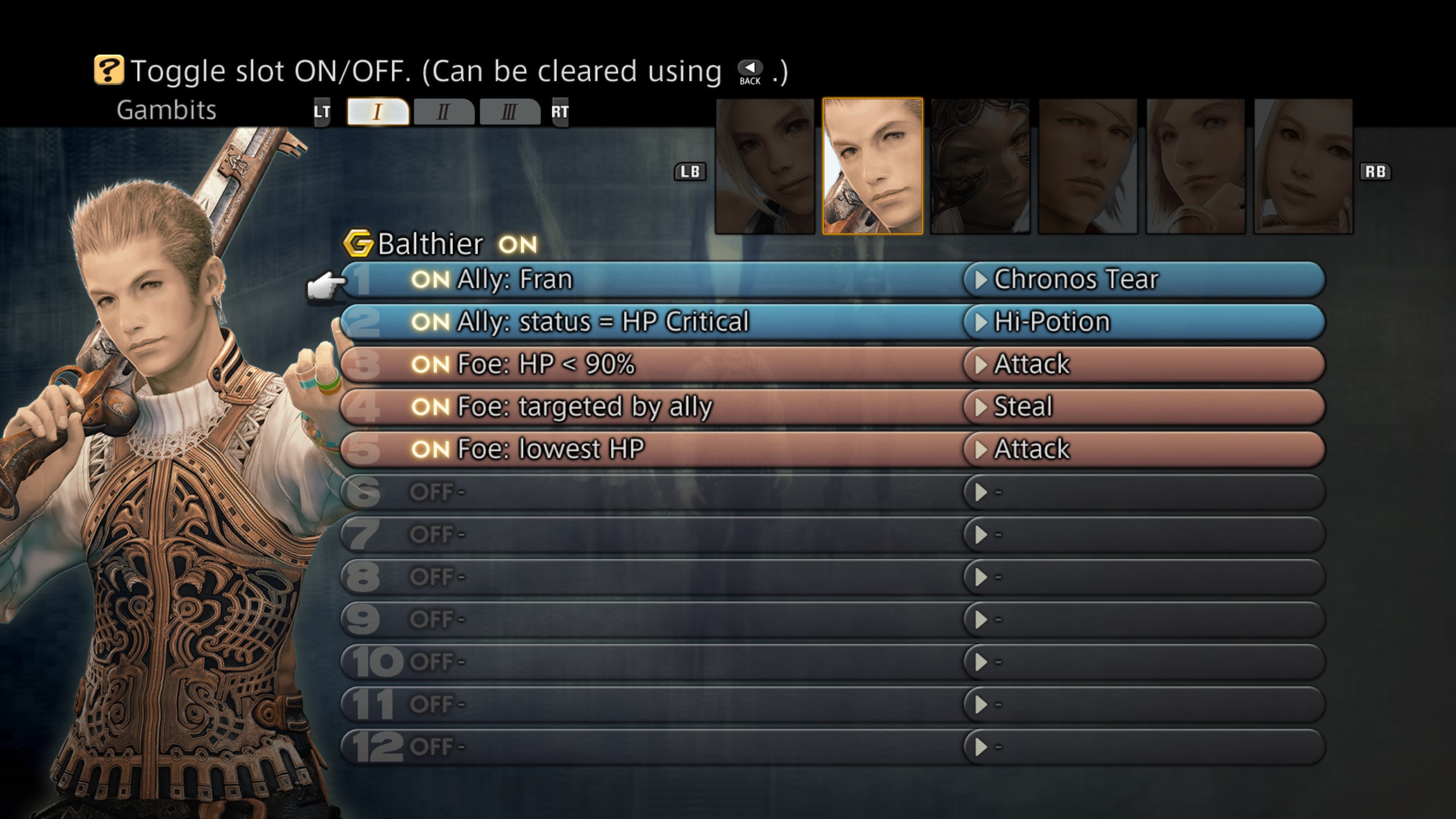15 years on, Final Fantasy 12's combat system is still the best
No hard feelings, Noctis.

I'm not gonna lie, I didn't like Final Fantasy 12 when I first played it—the first 10 or so hours felt like a real slog. The battle system was different, I didn't like Vaan, and the story seemed weak—or, at least, it certainly didn't intrigue me the way FF10 did. I don't remember precisely when the gambit system clicked for me, but it was sometime during Barheim Passage after escaping the dungeon at Nalbina Fortress.
From that point on, the gambit system continued to grow on me. So much so that 12 became my favourite out of all the Final Fantasy battle systems. And having played Final Fantasy 12: The Zodiac Age recently, which implements the job system previously only available in the International version, I can confidently say—15 years later—that it's still my favourite combat system from any Final Fantasy game.
If you've never played FF12, the differences in combat between it and the older games seems like a lot. You aren't thrown into random battles—you initiate them with enemies visible on the field—so you don't get thrown into a separate arena, complete with battle theme. And instead of having to input commands on a menu to attack, heal or fire off a magic spell—although you can still do this if you choose—you set up gambits that dictate what you want each character to do, based on parameters you set.
You set the target—either enemy or ally—and then an action you want to be performed. You can narrow this down further by specifying variables associated with the target. So for my playthroughs, I generally set the same two attack gambits for every character and build from there. The first is always 'Foe: Party leader's target - Attack' followed by 'Foe: Lowest HP - Attack'. Gambits are always executed in the order that they're listed, so by default, everyone should be attacking the same enemy—the party leader's target—and the party leader will attack the enemy with the lowest health. This way, if your party leader happens to be doing something else, like using an item or healing (or dying), the actions of other characters won't be disrupted.
Healing spells work similarly, and you can set up specific allies as targets, or any party member that drops beneath a certain health percentage. Main healers should also have their healing gambits above any offensive ones; otherwise, they'll always prioritise attacking. And if damage-dealing characters have access to healing or revive spells, I'll set those up below their attack gambits—with a slightly higher health threshold than the healing character—to help out with mana use early on.


Setting up a 'steal' gambit means you'll have plenty of Gil to play with, but you need to be a little inventive if you don't want the thief to try to steal from the same enemy constantly. The setup I use is 'Foe: HP < 90% - Attack', Foe: targeted by ally - Steal', and 'Foe: lowest HP - Attack' in that order. This works whether or not the thief is the party leader, though you'll get more steals in if they are. The third gambit is the one that initiates combat, but they'll automatically switch to the second gambit as soon as another party member targets the enemy (assuming all allies have the 'party leader's target' setup), which is almost instantaneous. They'll then switch to the first option when that enemy is lower than 90% health. The only time I'll turn this gambit off is during boss fights, where the health pools are much larger between health percentages.
There are loads of gambits to choose from, and you can make them as straightforward or as complicated as you like. I love setting them up for every conceivable situation, then letting my party loose and watching how things unfold. I constantly adjust gambits as the characters learn new spells or abilities, and I'll manually cast some spells during tougher fights.
The biggest gaming news, reviews and hardware deals
Keep up to date with the most important stories and the best deals, as picked by the PC Gamer team.
Not everyone seems to share my love of the gambit system, though. I knew plenty of people that would switch off the party leader's gambits, so it felt like they had something to do. Their main complaint was that it felt like the game played itself. You still have to put in the work, though—you're just doing it before fights rather than during them. And even then, you'll likely still need to make adjustments or perform certain actions manually mid-battle if the situation calls for it.
The biggest problem with most Final Fantasy games is how repetitive combat can get, especially in the later stages when you're mopping up sidequests or preparing for the final boss—but this is something FF12 specifically manages to negate to a certain degree. You're not getting thrown into random battles every two seconds and wasting time by having to go to a whole new battle screen. And by extension, you don't have to go through the motions of inputting the same sequence of spells or attacks for the same monster for the 679th time. There are times when you'll still want to grind XP for sure, but the fights themselves are much less arduous because of your gambits.
Everyone's different, though—I'm not a big fan of the direction Final Fantasy 15, and more recently, the Final Fantasy 7 Remake, has taken with regards to combat. Still, I know plenty of people that seem to enjoy it. For me, Final Fantasy has never been about frantic action-based combat. I'll play any main Final Fantasy game Squeenix decides to release, but it was the massive nostalgia trip that drove me to finish FF7 Remake rather than because I was enjoying the combat.
Final Fantasy games are my happy place; they are where I can chill with the story and the low-stress combat. For me, the fun of 12's gambit system is the experimentation—setting up what you think will work for whatever you're about to tackle, then sitting back to watch the results.
Final Fantasy 7 through to 13 are games I'll always go back to. And while I'd argue that all of those have much stronger stories than Final Fantasy 12, the gambit system feels superior to the others, even today.

Sarah started as a freelance writer in 2018, writing for PCGamesN, TechRadar, GamingBible, Red Bull Gaming and more. In 2021, she was offered a full-time position on the PC Gamer team where she takes every possible opportunity to talk about World of Warcraft and Elden Ring. When not writing guides, most of her spare time is spent in Azeroth—though she's quite partial to JRPGs too. One of her fondest hopes is to one day play through the ending of Final Fantasy X without breaking down into a sobbing heap. She probably has more wolves in Valheim than you.

